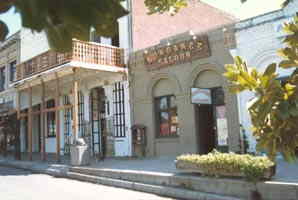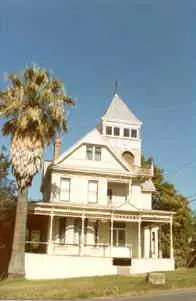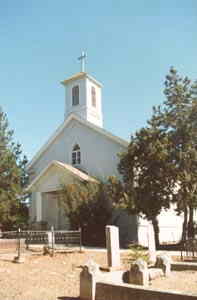FOLSOM
|
FOLSOM |
|
|
|
|
NAME: Folsom COUNTY: Sacramento ROADS: 2WD GRID #(see map): 2 CLIMATE: Mild winter and summer BEST TIME TO VISIT: Anytime. |
COMMENTS: Semi-ghost REMAINS: Many original buildings. |
|
The progressive nature of Folsom currently could give the impression of a relatively new city but, in fact, Folsom is one of the older cities in Northern California and is very proud of its past. The first known European to explore the area we now call Folsom came with a company of trappers in April of 1827. Prior to that the only people here were the Maidu Indians. Fur trapping was the primary occupation until gold was discovered in 1848, about 20 miles to the north at Sutter's Mill. After the discovery of gold, many communities sprung up along the American River, including Mormon Island, Negro Bar and Prairie City. Joseph Libby Folsom acquired the land in the area and hired engineer Theodore Judah to survey it for a railway and a township to be called Granite City. Unfortunately, Folsom died in 1855 before he could see the development of his property. The town was renamed in his honor. He died the year before the Sacramento Valley Railroad sent the first train west of the Rockies from Sacramento to Folsom on September 22, 1856. With the completion of the railroad, Folsom became a transportation hub to the Mother Lode with stage and freight lines meeting the train. Sutter Street was a center for hotels and commerce. From July 10, 1860 until July of 1861, Folsom became the western terminus for the Pony Express. During the gold rush, people came from all over the world to Folsom. In fact, in the 1860's Folsom had one of the largest Chinese populations on the West Coast. - Submitted by http://www.myfolsom.com  Sundance Saloon Courtesy Dolores Steele  Colhn Mansion -- kitchen built 1860 -- square cupola added in 1890 Courtesy Dolores Steele  Catholic Church Courtesy Dolores Steele  Folsom Cemetery Courtesy Dolores Steele  Folsom Cemetery Courtesy Dolores Steele  Folsom Prison Courtesy Dolores Steele |
|
|---|
|
|